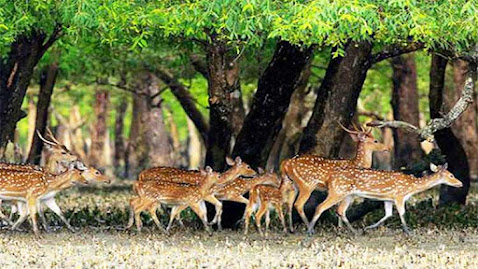Here's an article on various insects of the Sundarbans:
The Sundarbans, a mangrove forest
located in the delta region of the Bay of Bengal, is home to a diverse range of
insect species. Some of the common insect species found in the Sundarbans are:
- Sundarbans Tiger Beetle: This is a predatory beetle that feeds on other insects. It is found in the sandy areas of the Sundarbans.
- Giant Wood Spider: This spider is known for its huge size and distinctive pattern on its abdomen. It is commonly found in the forested areas of the Sundarbans.
- Sundarbans Honey Bee: This is a species of honey bee that is found in the mangrove forests of the Sundarbans. It produces a unique variety of honey that is highly valued for its medicinal properties.
- Mangrove Hopper: This is a type of grasshopper that is found in the mangrove forests of the Sundarbans. It is adapted to living in the salty environment of the mangroves.
- Sundarbans Walking Stick: This is a type of stick insect that is found in the Sundarbans. It has a unique ability to blend in with its surroundings, making it difficult to spot.
- Sundarbans Cicada: This is a species of cicada that is found in the Sundarbans. It produces a distinctive loud buzzing sound that is often heard in the forested areas of the Sundarbans.
- Sundarbans Dragonfly: This is a type of dragonfly that is found in the Sundarbans. It is known for its bright colors and striking appearance.
These are just a few examples of
the many insect species found in the Sundarbans. The diverse insect population
of the Sundarbans plays an important role in the ecosystem of the mangrove
forest.




